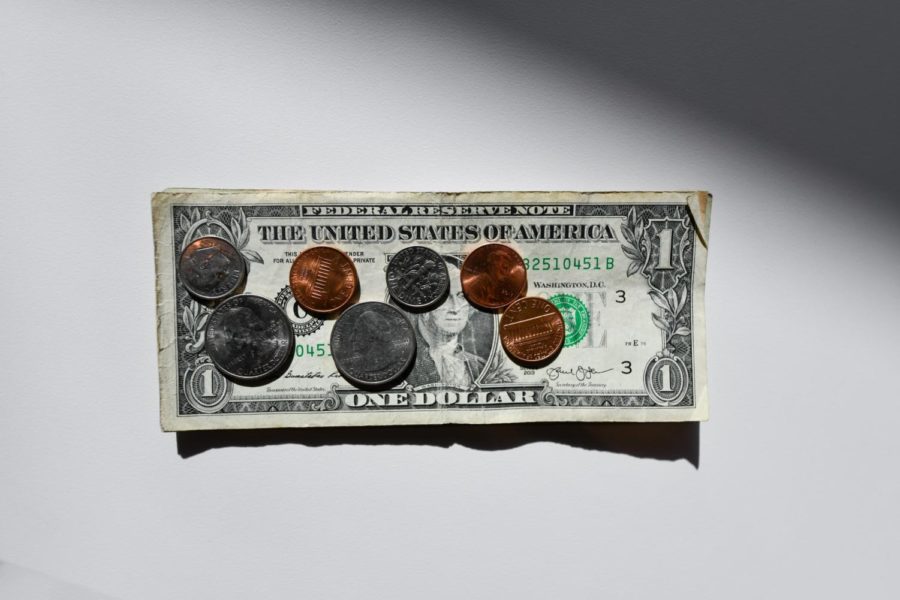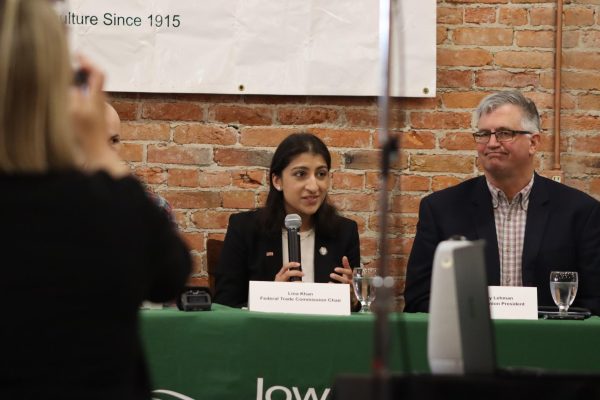Inflation exacts a heavier toll on rural Americans than on urban households
Even though gas may be cheaper in some rural areas compared to urban, David Peters, professor in rural sociology at Iowa State, said gasoline expenses take up more of the budget because urban areas tend to have more public transportation. Rural households also tend to drive less fuel-efficient vehicles.
July 31, 2022
By Katherine Kealey, [email protected], story via Iowa Capital Dispatch
Barbara Kalbach is a fourth-generation family farmer and a registered nurse from Dexter, Iowa, and she commutes 17 miles every time she needs to go to work, the store or the doctor.
The Kalbachs, along with other rural households, are experiencing a greater strain on their disposable income than their urban counterparts due to inflation. A study from the Iowa Small Towns Project at Iowa State University discovered high gas prices and lagging wages leaves rural households more financially vulnerable.
“We aren’t broke yet,” Kalbach said. “We entered this area of the economy debt free. However, we are very careful with our income and the way we spend our money, in that we are not buying new equipment, buying land or those kinds of expenditures because we have no idea.”
While examining non-metro areas with populations of less than 2,500 people, David Peters, a professor of rural sociology at Iowa State, found that expenses rose by 18.5% and wages rose by 6.1% from 2020 to 2022 in rural areas. Across the same two-year period, urban areas saw costs increase at a slower rate of 14.5%, while wages increased by 8.6% for urban workers. This created a 49% decrease in rural discretional income between June 2020 and June 2022.
“Generally speaking, under this inflationary pressure with sluggish wage gains in rural areas, the advantage of rural areas being a low-cost center for living is slowly eroding if these inflation gains continue,” Peters said.
What are the differences between rural and urban budgets?
By 2022, 91% of rural households’ income was consumed by living expenses, leaving $5,400 in expendable income. Meanwhile, urban households were left with $14,200 for any added expenses outside of their average monthly needs. Urban budgets only saw a 13% decrease in discretional income from June 2020 to June 2022.
“So rural areas are experiencing faster increases in their expenses, but they are not getting the wage gains that urban workers are getting,” Peters said. “So if you are in an urban community, you are paying for high inflation, but your wages are going up at faster rates. So it takes some of the bite out of that.”
The driving force behind these differences is the fact that rural Americans typically spend more money on commuting, whether that’s to and from work, or to and from childcare. Even though gas may be cheaper in some rural areas compared to urban, Peters said gasoline expenses take up more of the budget because urban areas tend to have more public transportation. Rural households also tend to drive less fuel-efficient vehicles.
Rural households also spend more on heating costs, relying on liquid propane or liquefied natural gas for fuel, while urban households use utility gas piped under the ground.
“Tanked heating fuels for, like, LP and liquefied natural gas and fuel oil — those all have risen in costs as well, sizably actually,” Peters said. “That contributes to kind of a faster increase in household expenses in rural communities.”
What’s driving the increase?
It is unlikely current inflation rates are due to increasing wages, Peters said, because rural areas are seeing higher rates of inflation along with lower wage increases. Instead, he said a major source of inflation is due to the pent-up demand from the pandemic.
“People couldn’t get goods, and now there is just a rush to buy things they couldn’t buy, and that goes for services as well travel and personal care,” Peters said. “A lot of people were shut down during the pandemic, they delayed taking trips, they delayed work on their homes, they delayed large purchases because of the lack of availability of goods. When the pandemic eased up, there are just a lot of people wanting the same products.”
In comparison to the bottlenecks caused by the pandemic, government stimulus checks are a minor factor contributing toward inflation, Peters said. Once people were released from lock-down, there was a rush on most goods. In response, market prices increase to detour people from buying limited goods.
The supply chain issues have resulted in a scarcity of materials to repair farming equipment, but this isn’t the only struggle facing farmers, Kalbach said. Iowa farmland value grew 29% from November 2020 to November 2021, triggering higher property taxes. Farmers also face a limited supply of fertilizer, and the United States Department of Agriculture stated that fertilizer prices “could likely increase” into 2023.
Kalbach said her fertilizer costs have tripled in the last few months. What’s next, she fears, is a drop in crop prices.
“You have had your input costs to raise your corn beans and your row crops, and if you have borrowed the money that you still have to repay that money — only you have a lot less income to repay it with,” Kalbach said. “I expect to see that in the next year, and that is when it will be hurtful to farmers.”
The increase in costs can also be attributed to the war in Ukraine. Even though the price spikes could be temporary, they still resulted in a 40% drop in disposable income for rural Americans.
“If all of this is temporary and it disappears by the end of the year, then it is more of a temporary blip on the radar,” Peters said. “But if the federal government believes that these prices are the new normal, then there is going to have to be very specific policy programs to address that.”
“Commodity prices have been very high, but we have been through this before, and we have watched them go up, but then they go kaboom, back down again,” Kalbach said. “What an eight-dollar bushel of corn will buy is much more different than what a three-dollar bushel of corn would buy. Takes a whole lot more bushels of three-dollar corn to buy something.”
Peters said rural households now have a tighter cushion for unanticipated expenses.
“If inflation stays high, rural households are more financially vulnerable to unexpected expenses because there is only a $6,000 cushion,” Peters said. “Something unexpected happens, like they have to buy a new car. They don’t have the cash on hand to pay for it. So that just leaves rural people going further into debt, and risks them cutting back on food so they could have nutrition issues, or potentially defaulting on existing debt.”
Expenses on gas in urban areas increased by roughly $700, while rural areas saw an increase of over $950.
“I wouldn’t say it is necessarily cheaper to live in the country,” Kalbach said. “We don’t have a Sam’s or a Costco right down the street… so we pay a little more for our supplies in rural areas because of the shipping costs to get them there.”
Peters suggested the federal government could implement programs to aid rural households, but the real predicament is finding the most effective solution.
“There are a couple of ways to do that, and they all have their merits and demerits, but the key would be to probably bring fuel prices down,” Peters said. “That would have the most immediate impact and help rural household budget the most because that is really where the cost needs are coming.”
This article was originally published by the Iowa Capital Dispatch. Iowa Capital Dispatch is part of States Newsroom, a network of news bureaus supported by grants and a coalition of donors as a 501c(3) public charity. Iowa Capital Dispatch maintains editorial independence. Contact Editor Kathie Obradovich for questions: [email protected]. Follow Iowa Capital Dispatch on Facebook and Twitter.

















